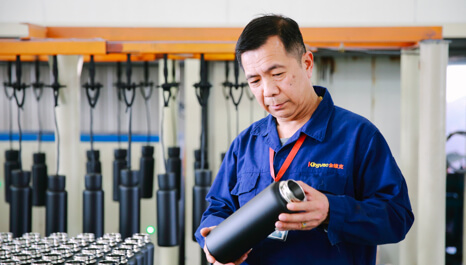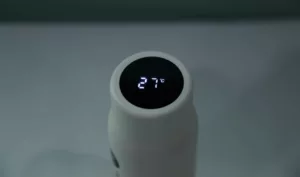Introduction
In daily life, many people think that “stainless steel” is “steel that does not rust”. If it rusts, it must be a counterfeit product. This understanding is too simple. First of all, stainless steel is “stainless”, not absolutely rust-free, but relatively rust-free under certain conditions. If improperly used in an environment or under conditions beyond its corrosion resistance, it naturally rusts. Secondly, manufacturers choose unreasonable materials, that is, manufacturers for the use of their products and choose the unsuitable stainless steel grade as raw materials or manufacturers of the production process is not passed. All of these situations will produce stainless steel rust problems. Currently, on the market, some manufacturers use inferior products indiscriminately, disrupting the market order, There are some consumers who suffer because of greed for cheapness.
So how do you identify the authenticity of stainless steel, and what are the methods?
Magnet Method
This method uses a magnet to suck products if the material sucked is “stainless steel”. This method seems to be very scientific, and its popularity is also very wide. In fact, this method is not scientific! At present, the world has developed five categories of stainless steel. Only Austenitic stainless steel is basically non-magnetic (processed or weakly magnetic), while ferritic stainless steel, duplex stainless steel, martensitic stainless steel, and precipitation-hardening stainless steel are magnetic. Therefore, the use of magnet suction to identify stainless steel often does not give the correct judgment.
Stainless Steel Determination Of Liquid
The stainless steel determination of the liquid identification method is through the observation of the liquid in the process of dissolving the measured steel species produced by the color change characteristics to determine or distinguish between the measured steel species in some cases. The color change is often associated with the measured steel elements nickel (Ni), molybdenum (Mo), manganese (Mn), and other specific elements. At present, China’s stainless steel determination of liquid identification methods can basically be divided into two categories: those without batteries and those that need to be equipped with batteries.
This does not require the battery to be subdivided, mainly by watching the measurement of liquid droplets on the surface of stainless steel after the color change and then comparing it to the chromatogram to distinguish. As the market is known as the “304 types”, it is marked with four standard colors corresponding to four stainless steel grades: 201, 202, 301, and 304, of which 201 corresponds to dark red, 202 corresponds to red, 301 corresponds to light red, and 304 corresponds to colorless or light yellow. 304 corresponds to colorless or pale yellow. These colors are the ones that appear when the corresponding steel grades are tested with the assay solution. For example, to identify 304-grade stainless steel, we use the above “304 types” measuring solution or “Ni8” type measuring solution test, the corresponding test results should appear; otherwise, it is not really 304.
Raw Material Test: Stainless Steel Water Bottle
We at Everichhydro are manufacturing professionals, which is why we have a department specializing in quality control to guarantee the quality of the products that we provide. Our quality control and manufacturing departments work in tandem in each and every phase and process, including the cutting, separating, shaping, inspection, and packaging processes—together they ensure the quality of the final product.
We ensure all raw materials are tested and qualified before entering the manufacturing phase.
We have more test procedures to ensure the reliability of raw materials. Our inspection technologies provide accurate data reading, and they are backed up by the sharp senses of our inspectors, allowing us to faithfully meet your specifications. The key to our successful manufacturing of quality insulated water bottle products lies in the strict inspection of every process.
Conclusion
There are many kinds of measuring liquids with batteries on the market, these products can be used alone or with the use of steel and can be determined in nickel (Ni), molybdenum (Mo), manganese (Mn), and other corresponding elements of the approximate content (percentage), and then can be compared with the relevant national authoritative standards to distinguish between the authenticity of the steel content and the superiority or inferiority of the fake. When using the first appropriate amount of specific drops in the clean steel surface, and then there will be sufficient power to the positive pole of the special battery (generally 9V, manufacturers can be equipped with the sale) connected to the steel plate, the negative pole connected to the steel surface of the drug beads (pay attention to not contact with the steel surface), after a few seconds to stop the power to observe the steel surface of the drug beads on the color of the changes in the instruction manual can be used to confirm the approximate content of a certain element in the steel. Specific methods of use are described in detail in the instruction manual.
The stainless steel determination liquid in small bottles on the market at present is small in size, light in weight, easy to carry, and low in cost. Through the use of stainless steel determination of liquid methods, we can easily identify the market to a certain extent, some deceptive behavior, and shoddy stainless steel. But the use of stainless steel determination by liquid identification of stainless steel, only answers the question of “not what grade”, and can not really answer the question of “what grade”. For example: with the “304-type” determination of liquid test business so-called “304” products, if the test results are the same as the real 304 products, but can not be concluded that it is 304, infer that “maybe” is 304. “Because no matter whether it is electrified or not, the test result is only a necessary but not sufficient condition for us to judge that the measured steel is a certain kind of steel (e.g. 304).




